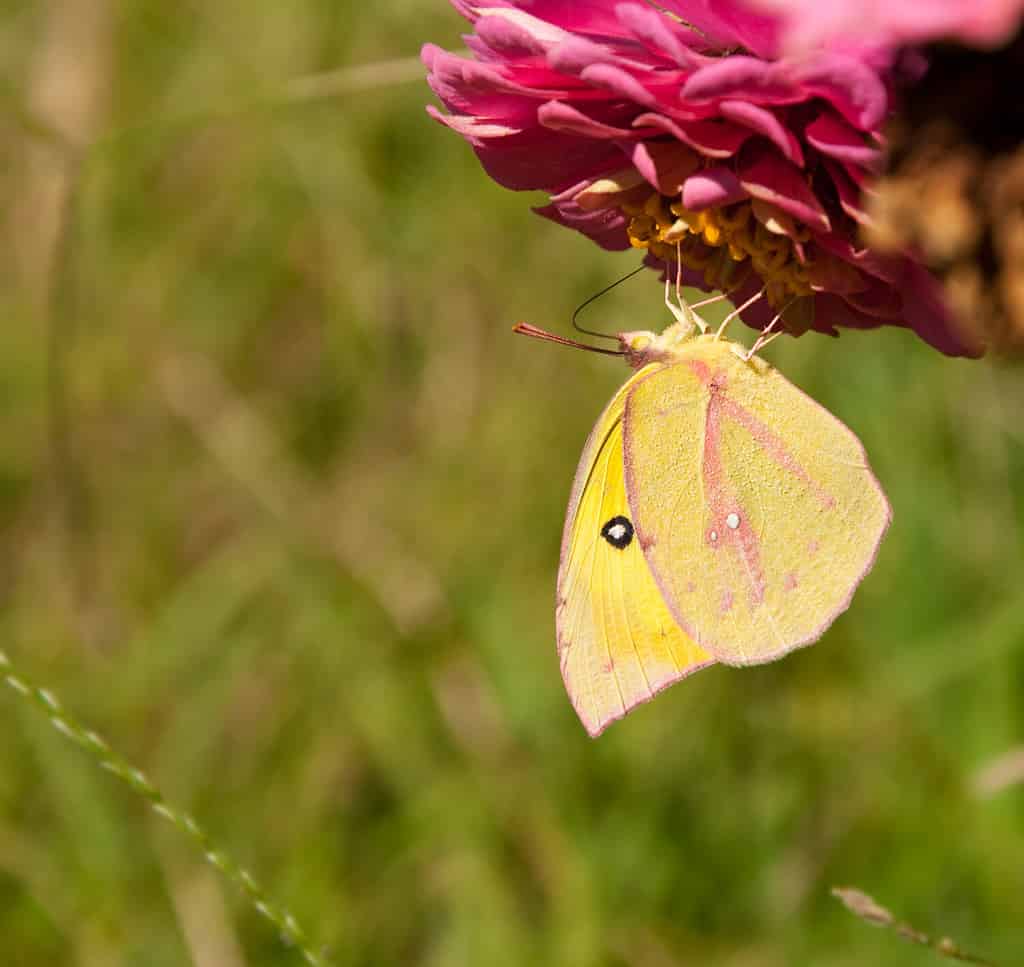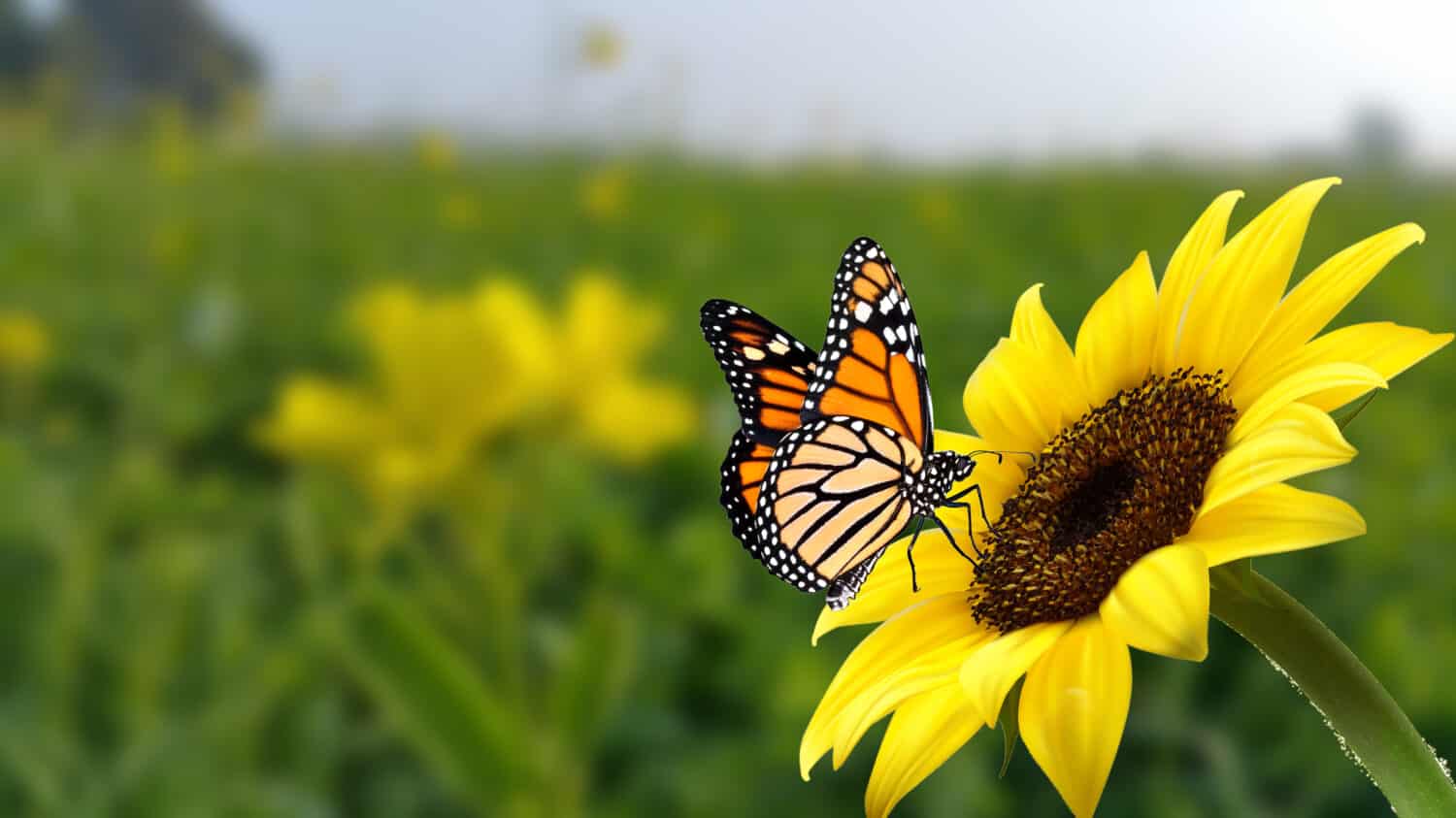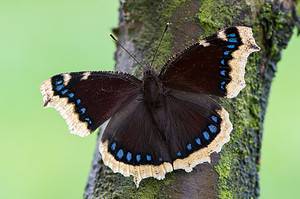Watching a butterfly flutter breathtaking wings as it glides through the air above you is a breathtaking sight. It’s one of the most beautiful visuals in nature that a person can experience in their lifetime. Although butterflies are insects, plenty of people don’t think of them in the same way they might think of other bugs like beetles, ants, or spiders.
Butterflies get a free pass from being called “creepy” or “frightening.” It’s all thanks to the spectacular beauty of their wings. As lovely as it is to watch a butterfly soar through the sky above you, it’s also normal to be curious about where they dip off to whenever it starts raining. Depending on the climate, rainstorms can potentially bring excessively heavy and powerful rainfall. Where exactly do butterflies go when it rains?
Butterflies Seek Shelter in Heavy Rainfall

This dogface butterfly is perched under a pink flower.
©Sari ONeal/Shutterstock.com
The truth about butterflies is that they’re incredibly fragile creatures. They’re small in size and their wings can’t face loads of external abuse from rough weather if they want to survive. In the same way, humans seek shelter in the rain, butterflies find safe spaces and places where they’re fully covered whenever it’s raining. As human beings, we can step through light rainfall for a little while before finding total coverage. Humans won’t instantly die on their way to finding a safe place underneath some type of protective barrier. Butterflies are similar, but they have to be far more wary and proactive. Imagine getting hit with a water balloon twice the size of a bowling ball! That’s what a butterfly feels when a single large-sized raindrop lands on their body or wing. If rain has already started falling on a butterfly at the start of a rain storm, they’ll usually hide out and wait somewhere safe until the rain completely stops before they’ll attempt to fly again. They’ll also make sure their wings are dry before attempting to take off.
Can Butterflies Fly in the Rain?

Rainy weather with powerful raindrops like this wouldn’t be safe for butterflies to fly around in.
©Brian A Jackson/Shutterstock.com
The short answer to this question is… no. A butterfly won’t even attempt to fly in the rain due to their natural sense of survival instincts. When they notice rain starting, they immediately seek shelter. The reason for this is that rainfall ebbs and flows. Even if the rainfall is gentle and light for a few minutes, it can speed up and become alarmingly heavy in an instant. Rather than risking their lives by putting their delicate wings in danger, butterflies will stay put in one safe place until the rainy weather completely subsides. Butterflies depend on sunlight to keep their body temperatures regulated. It doesn’t make sense for them to soak in rainy weather anyway. In cold rain, they’ll overexert themselves trying to regain a healthy amount of heat without help from the sun. Since butterflies have feet with impressively strong grips, holding onto whatever dry surface they’ve found during a storm usually means they’ll survive to see another day.
Where Do Butterflies Actually Hide in Heavy Rain?

Butterflies hide underneath leaves like this during rainstorms.
©Eva Syarkawie/Shutterstock.com
When it comes to the great outdoors, butterflies have a handful of places where they can dip off when they need to hide from heavy rainfall. One common place would be underneath large leaves. They may choose to hide out under slanted rocks or bushes that have wide branches that keep water from dripping onto their little bodies and wings. Trees, whether they’re dead or alive, are great places for butterflies to hide underneath as well. Tall blades of grass and piles of rubble also work. Man-made structures are just as safe for butterflies in these circumstances when they know they’ll have enough privacy and security to wait out bad weather. Some examples of man-made structures include anything you’d find in a common backyard garden. Butterflies can hide beneath birdhouses, bird feeders, plant vases, slanted shovels, watering pots, and wheelbarrows.
How Long Do Butterflies Survive?

This stunning red and black butterfly spreads its wings in New World, Panama.
©David Havel/Shutterstock.com
Whether it’s raining every day or a butterfly faces perfect weather all the time, their life spans still vary based on their species. While some butterflies can live long-lasting lives for several months, others typically only live for about four weeks. There are over 15,000 species of butterflies and new ones are found and classified all the time. The longest-living butterfly species is the brimstone butterfly. They can live for up to 13 months! Coppers and Small Blues are two different butterfly species that only survive for a few days in their adulthoods. With only a few days under their belts, Coppers and Small Blues have some of the shortest lifespans in existence. With factors like rainy weather at play, it makes sense that butterflies would do what they can to preserve their lives. Whether they’re flying and functioning for a few days or up to 13 months, staying safe from heavy rainfall to protect their time on earth is something that comes naturally to these beautiful flying creatures.
Thank you for reading! Have some feedback for us? Contact the AZ Animals editorial team.








